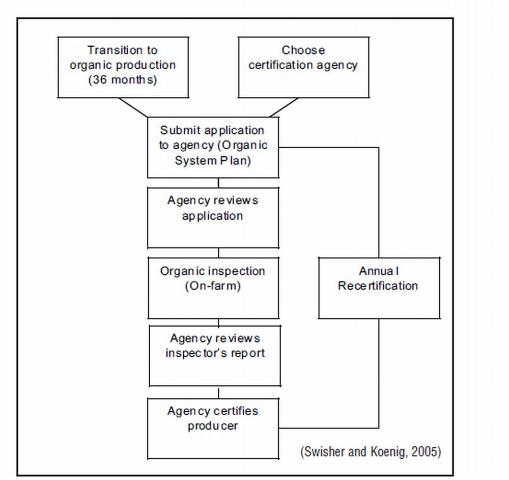What is Organic Crop Production?
There are many Small Farms all throughout the Panhandle wishing to tap into the organic production market. Misconceptions of organic production lead some to believe it is as simple as avoiding spraying “poisons” or pesticides, and to use organic forms of fertilizer rather than mineral fertilizers. There is much more to the National Organic Program than consumers and small farms in Northwest Florida perceive.
National Organic Program (NOP)B
The Organic Foods Production Act was passed by Congress in the 1990 Farm Bill. This act was the first step to creating national standards for organic food production and utilized USDA to carry out the creation of the NOP. A part of the NOP’s creation was also the establishment of the National Organic Standards Board (NOSB). The NOSB is appointed by the Secretary of Agriculture and made up of farmers, conservationists, consumers, processors, retailers, scientists, and certifying agents. The job of the NOSB is to advise the NOP on production inputs and substances that should be allowed or prohibited.
Farm PlanA
The goal of organic production is to restore, maintain, and enhance ecological harmony. To reach this goal an Organic System Plan or Farm Plan must be implemented including a soil management plan and a pest management plan. The soil management plan would include details of farm rotation, tillage, irrigation, fertility, and nutrient monitoring to reduce effects on water quality. The pest management plan describes the procedures for controlling pests with mechanical, biological, and cultural practices. The plan will document the following:
- A description of the record keeping protocols.
- A plan of all inputs to be used, including documentation of their composition, source, and location and date used.
- The monitoring practices to verify the plan is effectively implemented.
- A description of practices and physical barriers used to prevent commingling of organic and conventional products on farms with split production. Also, to prevent organic products from contamination with prohibited substances.
- An accurate map of the farm including permanent structures, field boundaries, non-crop areas and hydrologic features such as wells, irrigation ditches and ponds.
- Field histories documenting production methods (conventional, transitional, organic), crops, cover crops, all inputs, and field sizes or production area (if green-house or beds).
CertificationA,B
To legally call an operation organic it must be certified by an appropriate certifying agency. A certified operation has proven it adheres to the NOP’s standards. The steps to certification start with a producer designing and implementing an Organic System Plan that follows and manages the farm according to organic regulations. Other requirements include submission of an application, a written history of substances applied to the land for the previous 36 months, and an on-farm inspection by the certifying agency.
 Small Farms ExemptionC
Small Farms ExemptionC
Farms with $5000 or less of gross organic sales can be exempt from organic certification. With the exemption, a written Organic System Plan in not required to sell, label, or represent product as organic. The farm production still must follow all of the organic regulations. Specific rules that must be followed are:
 Maintain records for at least three years
Maintain records for at least three years- Not use the USDA organic seal on products or refer to them as certified organic.
- Meet other USDA organic labeling requirements.
- Not sell product as an ingredient for someone else’s organic product.
There is much more to be learned before seeking organic certification or producing and selling organically under the small farms exemption. Read more about organic crop production from a University of Florida/IFAS publication that addresses approved amendments, soil quality and fertility management, monitoring a nutrient management program, seeds and transplants, pest management, weed management, insect management, and disease management. Also contact the local extension agent and request more information for organic production if considering an organic farm or transitioning a conventional farm to organic production.
Literature:
ATreadwell, D.D. (2009, November) Introduction to Organic Crop Production. Retrieved from http://edis.ifas.ufl.edu/cv118
BUSDA OVERSIGHT OF ORGANIC PRODUCTS (2012, November). Retrieved from http://www.ams.usda.gov/AMSv1.0/getfile?dDocName=STELDEV3004443
CDo I Need To Be Certified Organic? (2012, June). Retrieved from http://www.ams.usda.gov/AMSv1.0/getfile?dDocName=STELPRDC5099113
- Battling Scab in Panhandle Pecan Trees - September 22, 2017
- Where to Start with Marketing Fresh Produce? - April 28, 2017
- Using the Linear Bed Foot System for Vegetable Fertilization - August 26, 2016

